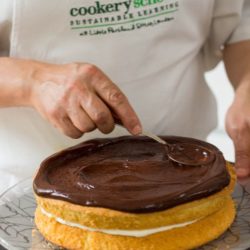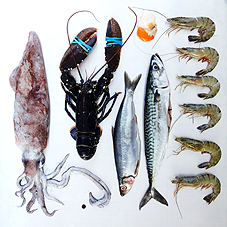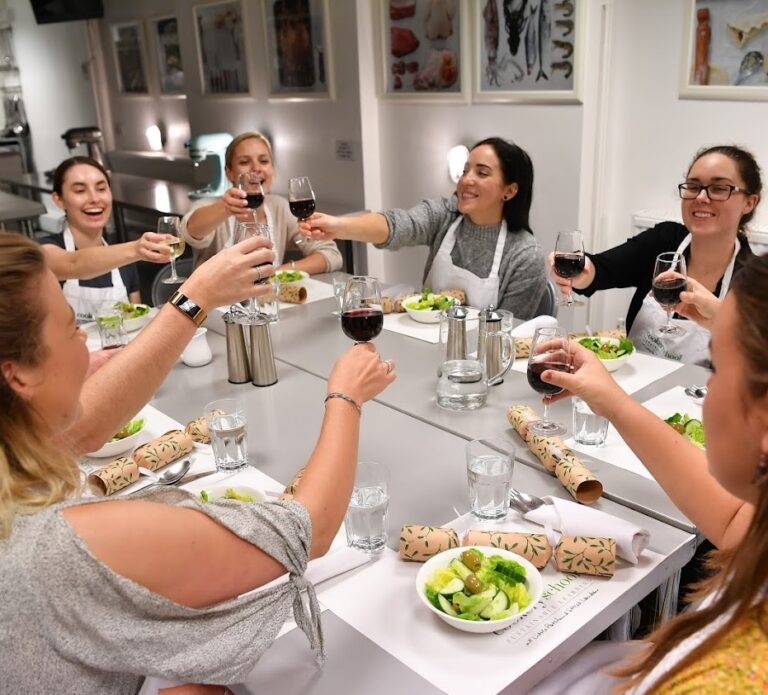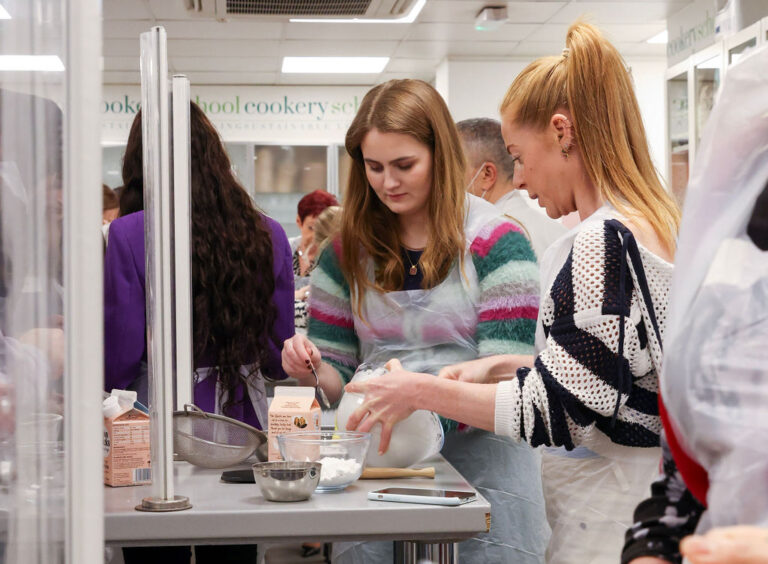Chef Spotlight: Chantal Coady OBE

We’re so excited to be welcoming the mother of English chocolate to the Cookery School kitchens this Christmas for an exclusive chocolate class! Chantal Coady established Rococo Chocolates nearly 40 years ago and since then, had led The Real Chocolate Revolution from the front. She’s done so much for the industry that she was awarded an OBE for services to chocolate!
We sat down with Chantal Coady to find out what excites her most about chocolate and received a sneak peek of the tips she’ll be revealing at our Christmas Chocolate Masterclass on December 3.
What attracted you to chocolate when first starting out?
Who is not attracted to chocolate? Surely it’s one of the most delicious and satisfying foods on earth – I have been crazy about it for as long as I can remember. In fact, as a child I literally dreamed about chocolate and sweets. As I grew up and became more sophisticated, I was lucky enough to get a job selling chocolate in Harrods. Now that was quite an education!
You were one of the first to move towards single-estate chocolates, working with Grenada Chocolate Company for a tree-to-bar approach. Why was this so important?
I first came across the concept of single-origin chocolate in the 1980’s when Valrhona pioneered the ‘wine making’ approach, inspired by their neighbours in the Rhone Valley. When I discovered the Grenada Chocolate Co and the work they were doing at the turn of the century, I understood why I needed to really engage with this business model. Our family invested in a small cocoa farm on the island to support this company and the farmers. We donated all of the crop to the makers and bought back the chocolate at a proper commercial price, meaning that there was real value added at the source.
What part of the chocolate industry/working as a chocolatier excites you most?
In my new life, since exiting Rococo, I feel really inspired to work on a much bigger picture and to see how I can impact the world of cocoa on a global scale. I hope to connect the farmers and producers with the consumers through technology.
What distinguishes luxury chocolates from their high-street counterparts?
That is like asking what distinguishes a Michelin starred restaurant from a high street chain! I look for a high level of craftsmanship, very well-sourced ingredients and a transparent supply chain. In reality, it’s not always so easy to unpick.
What should people be looking for when looking to buy chocolate to cook with?
I would always urge people to find the best chocolate they can afford, and don’t necessarily go for the highest percentage – this is a fake marker of quality. Look for information about the type of bean and the origin. If this goes back to a single estate, it should be worth paying a premium for.
Having said that, there are much more generic single origins, produced on an industrial scale and sold though famous German supermarkets that cost very little. Ultimately that is down to how you choose to shop and your budget.
What are the biggest mistakes people make when working with chocolate? Do you have any tips for keen home chocolatiers?
Probably the most common one is to store chocolate in the fridge – that is a recipe for disaster! Think about what happens when you take a cold bottle out of the fridge, in seconds there is a layer of condensation on it.
Water is the enemy of chocolate! Always store in a cool dry place and if you happen to be in the tropics, wrap your chocolate in several layers, then put into a Tupperware box or similar. Allow the chocolate to warm up slowly to room temperature before opening the box and using.
When melting chocolate, I also go for a slow option. An oven on very low temperature is best, a Bain-Marie next best. A microwave is the most likely to burn the chocolate if you are not very careful!
–
Find out what else Chantal Coady has to reveal by joining us at our Christmas Chocolate Masterclass on December 3!





